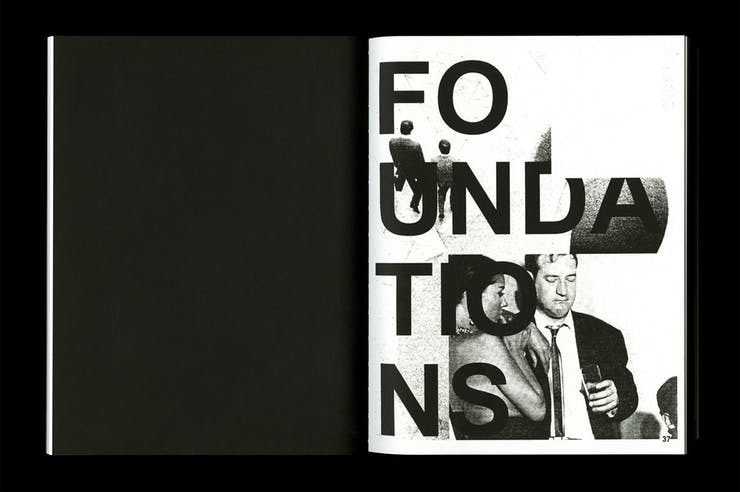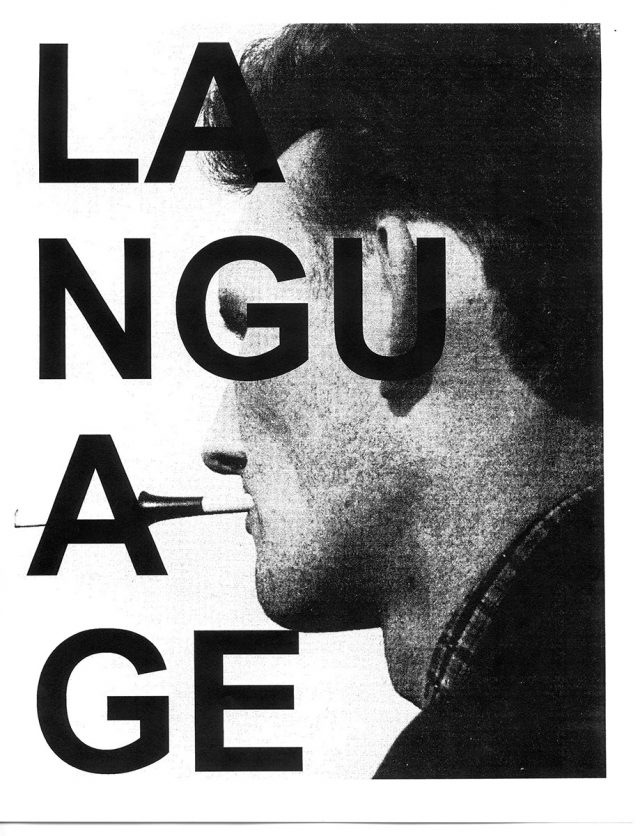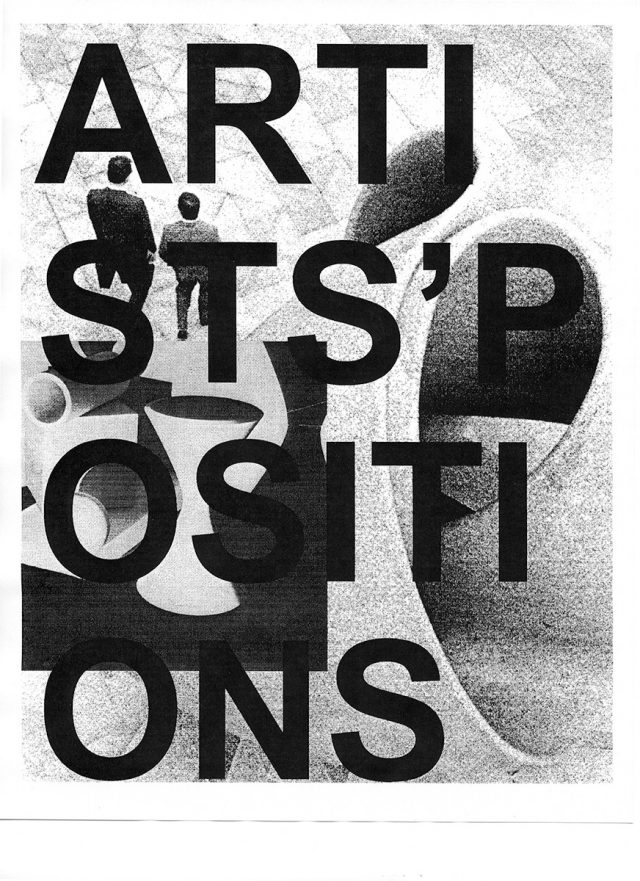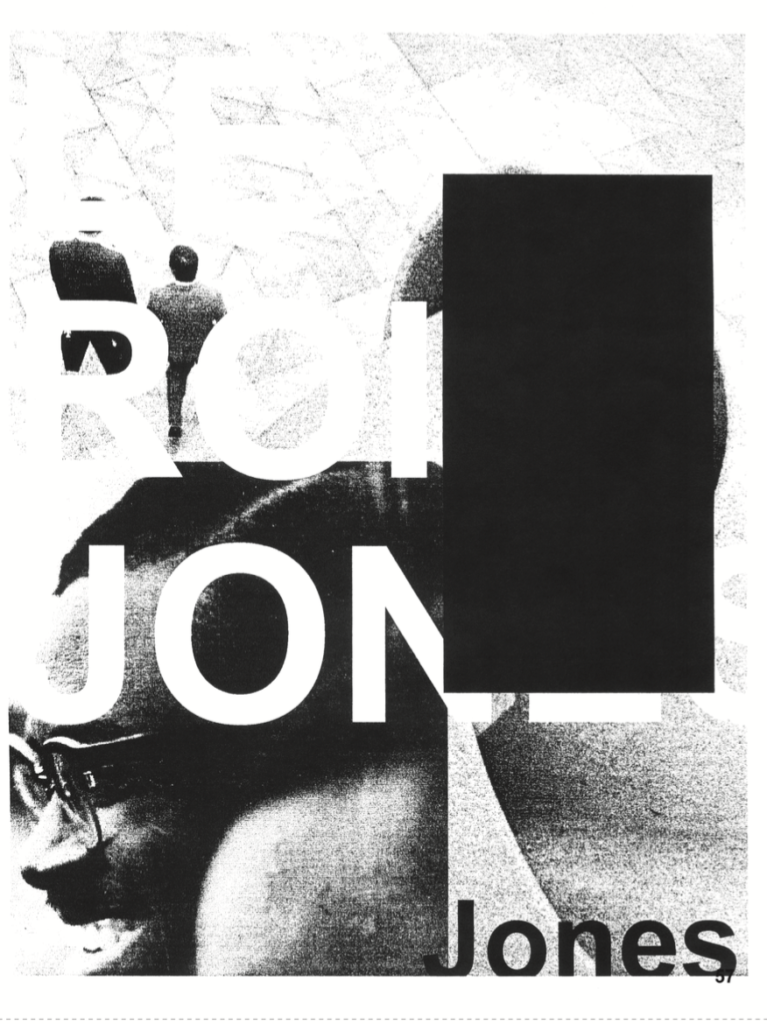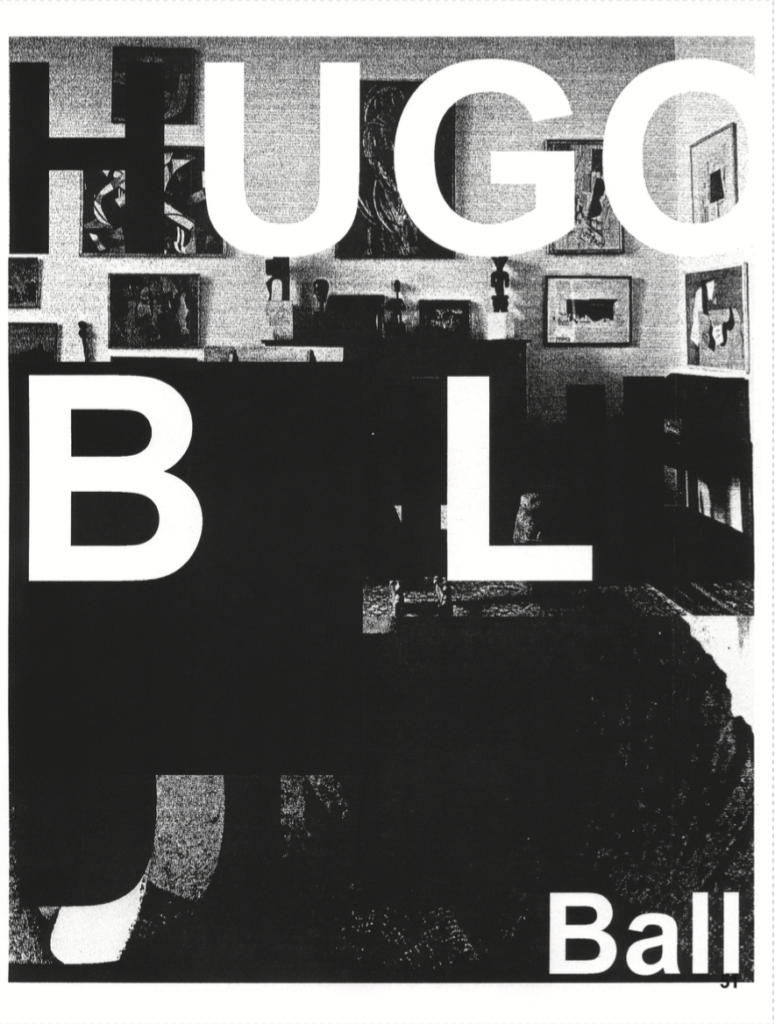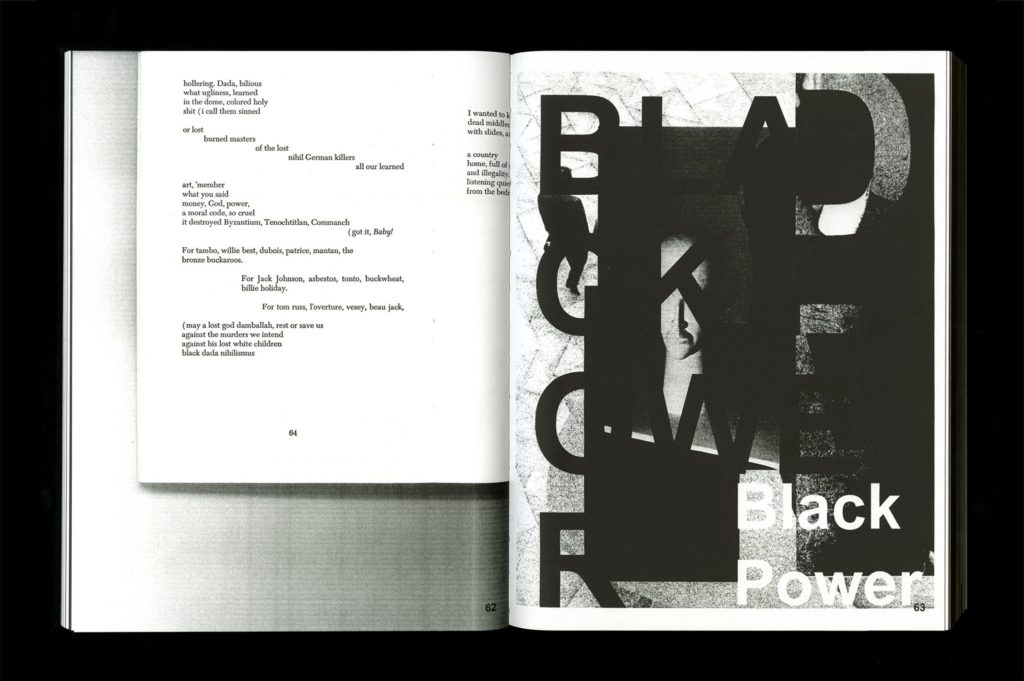
“Black Dada is an idea. When pressed, I often say it’s a way to talk about the future while talking about the past. It surfaced in a conversational space, when I was just talking to friends. I had Amiri Baraka’s book The Dead Lecturer, which contains the poem “Black Dada Nihilismus.” I found the language striking: “Black Dada.” Just that. The “Black” and the “Dada…Black” as a kind of open-ended signifier, anti-representational rather than representational. And then “Dada”—sort of nonsense. A sound, but also referencing a moment in art. So this language became a productive means to think about how the art object can function, and does function, in the world. What can art do?…Not “what is it?” It’s whatever you want it to be, but what can it do?”
Adam Pendleton, Our Ideas (Oct 2 – Nov 9 2018), Pace Gallery
The questions of ‘what can art do?’ and ‘who can make these claims?’ are at the heart of Adam Pendleton’s series “Black Dada”. Begun in 2008 as a text, “Black Dada” – as Pendleton states above – is a conceptual manifesto for his practice: a critical articulation of blackness, abstraction, and the avant-garde. It is a non-linear exploration of past, future and present, of language, art and function. It has no set definition, and that is exactly the point. It is what it needs to be, and for the artist, that need is to “dismantle history.”2
The resulting paintings, collages, videos and installations are dense, multilayered visual fields of text and images that are full of rich references to artistic and political movements from the 20th century to the contemporary, reaching back to Hugo Ball’s “Dada Manifesto” of 1916, the Harlem Renaissance, Minimalism and Sol LeWitt, decolonisation, the Civil Rights Movement, to the more recent Black Lives Matter movement.
In 2017, Koenig Books published Pendleton’s Black Dada Reader (cover displayed left), a collection of documents and texts from various sources – such as Hugo Ball, W.E.B Du Bois, LeRoi Jones, Stokely Carmichael, Gertude Stein, Adrian Piper, William Pope.L, Sun Ra, Ad Reinhardt, Joan Jonas and Thomas Hirschhorn – that were originally photocopied and compiled since 2011 into a spiral-bound zine to offer a contextual framework to Pendleton’s concept of Black Dada that permeated his artistic practice.
Each reference infers the next, their mixture and conjunctions offering more insight into Black Dada as an idea. By compiling these various sources, Pendleton’s work enters into a wider discourse on appropriation, representation, race and politics in American culture. The Reader also includes essays by different curators and critics who have worked with Pendleton’s work and engaged with Black Dada before, including Adrienne Edwards from the Walker Arts Center, Jenny Schlenzka from MoMA PS1 (now at PS122) Tom McDonough, Susan Thompson from Guggenheim, and Laura Hoptman from MoMA.
It is organised into three different sections: FOUNDATIONS (foundational ideas to Black Dada from texts by thinkers), LANGUAGE (text by writers he has been drawn to), and ARTISTS’ POSITIONS (texts about or by artists whom he relates to).
In an interview with Allie Biswas for the September 2016 Issue of Brooklyn Rail, Pendleton comments how the act of putting Black Dada Reader felt retroactive:
“I felt that I was creating something that should have existed ten, twenty, forty years ago. It was like I was inserting things into the art-historical canon. For example, with the Black Dada paintings – which relate formally to modernist painting and the monochrome – I was infusing that space with very different language, quite literally, and also sort of messing it up. Messing it up slightly, but a lot at the same time, so it’s also a contradiction, this duality, how a little bit is a lot…”3
Allie Biswas, “In Conversation: Adam Pendleton with Allie Biswas”, Brooklyn Rail, September 2016, 64. PDF
It is not difficult to understand the connections between Pendleton’s ways of working and Dada: his use of language and embrace of its absurdity, layering text and image, cutting, pasting, collaging different sources to create something new that not only engages with wider art historical narratives but also reflects current political and social issues. He goes on to say that Black Dada is a kind of “black space” – a social space where he could respond to language, especially its function. About using “Black Lives Matter” in his work, Pendleton explains that “it was about bringing a different kind of rhetoric and attention to the language, to the moment, to the movement.”4
Pendleton’s Black Dada Reader is an archive, a space for and about blackness that provokes questions about language and appropriation. It brings together voices and histories from different spaces that otherwise would not meet, but are held together in catalogue. By doing so, Pendleton creates his own space where the texts and images he appropriates enter a new timeline – one that is not simply fixed in the past or present. Therefore, he deconstructs the traditional sense of the archive and the institutions that uphold them. The viewer/reader is disoriented by these radical juxtapositions of text and image, each reading creating new meanings that add to the ever-growing concept of Black Dada in the moment that it is engaged with.
To go back to the initial questions Pendleton raises of ‘what can art do?’ and ‘who can make these claims?’, the Black Dada Reader proves that there is never a fixed definition of the function of art and language, and that is its purpose. As for the second question, Pendleton’s decolonial and deconstructivist approach to Dada and to white male dominated modernism in general illustrates that history/art/language is never static and has a right to be claimed by those outside its mainstream narrative, especially black artists, writers and thinkers.
Adam Pendleton: Who is Queen? is scheduled to open at the Museum of Modern Art, New York from 25 July to 4 October, 2020.
For more on Adam Pendleton:
Order the book once it’s back in stock!
Read
Op-Art: See the Sin written by Adam Pendleton, New York Times (21 June, 2020)
The Struggle for Happiness, or What Is American about Black Dada (Excerpt from Black Dada Reader) by Adrienne Edwards (1 February 2018)
What is ‘Black Dada?”Artist Adam Pendleton Lays Out His Disruptive Theory in a New Book by Terence Trouillot, Artnet (4 October 2017)
Watch
Endnotes:
- Our Ideas (Oct 2 – Nov 9 2018) Exhibition Page on Pace Gallery Website, https://www.pacegallery.com/exhibitions/adam-pendleton/.
- M.H Miller, “Adam Pendleton Brings Black Dada to MoMA and Pace”, The Observer (04/16/12) Online. https://observer.com/2012/04/adam-pendleton-brings-black-dada-to-moma-and-pace/.
- Allie Biswas, “In Conversation: Adam Pendleton with Allie Biswas”, Brooklyn Rail, September 2016, 64. PDF
- “In Conversation: Adam Pendleton with Allie Biswas”, 65.
